For our 75th blog post, in our 75th year, we decided to pull out all the stops and present something uniquely Chicagoan. This is the fourth in our series detailing the construction of Chicago’s “Initial System of Subways.” (To read the other three chapters, just type “Chicago subway” into the search window on our blog’s home page, and they should come up.)
The State Street subway opened on October 16, 1943, and celebrated its 70th anniversary just a few days ago. To top things off, we present a number of rare, vintage documents relating to the Chicago Rapid Transit system and the subway.
We hope that you will enjoy these period photographs and descriptions, which let history speak for itself.
-David Sadowski
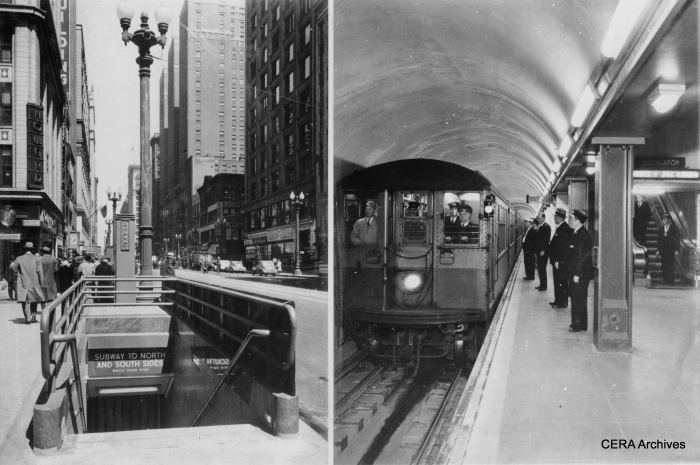
Chicago’s State Street subway as it looked upon opening in 1943. (Photographer unknown)
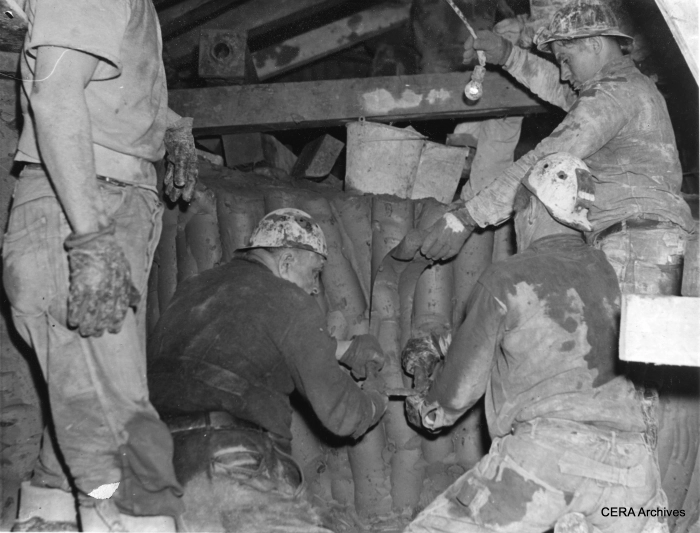
January 10, 1939 – “Because Chicago’s subway is being dug at a depth of 35 feet, where there is clay instead of rock, it is being dug with knives. Curved blades about a foot long, with a handle at each end, are held by two men while a third one pushes the knife downward to slice off a long strip of clay. It was found that this is the fastest way to cut through clay. Three ‘groundhogs’ are shown above using one of the knives.” (Photographer unknown)
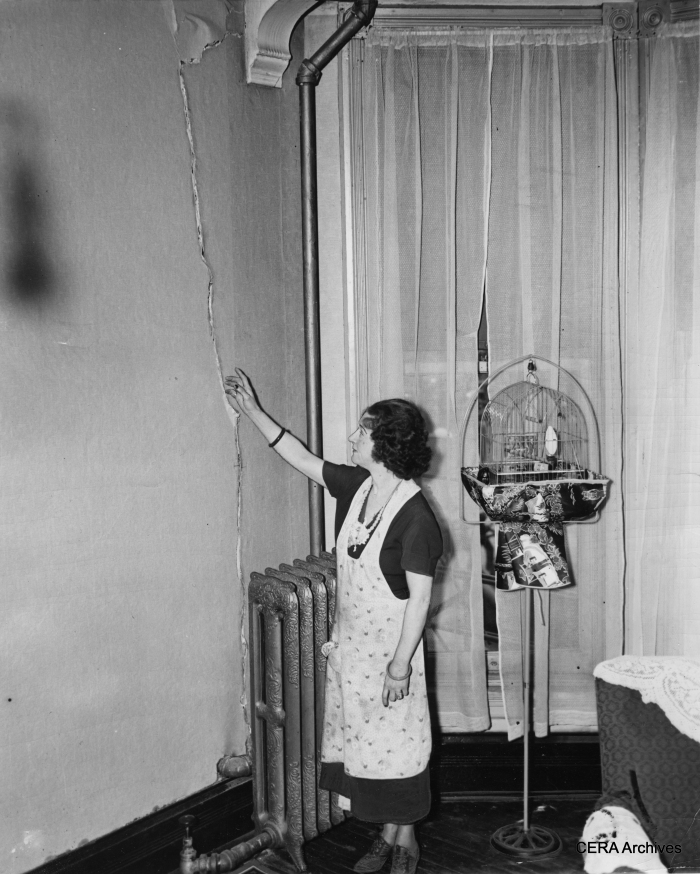
May 17, 1939 – “Lillian Edwards looking at crack in wall in her apartment, caused by subway construction.” (Photo by Padulo)
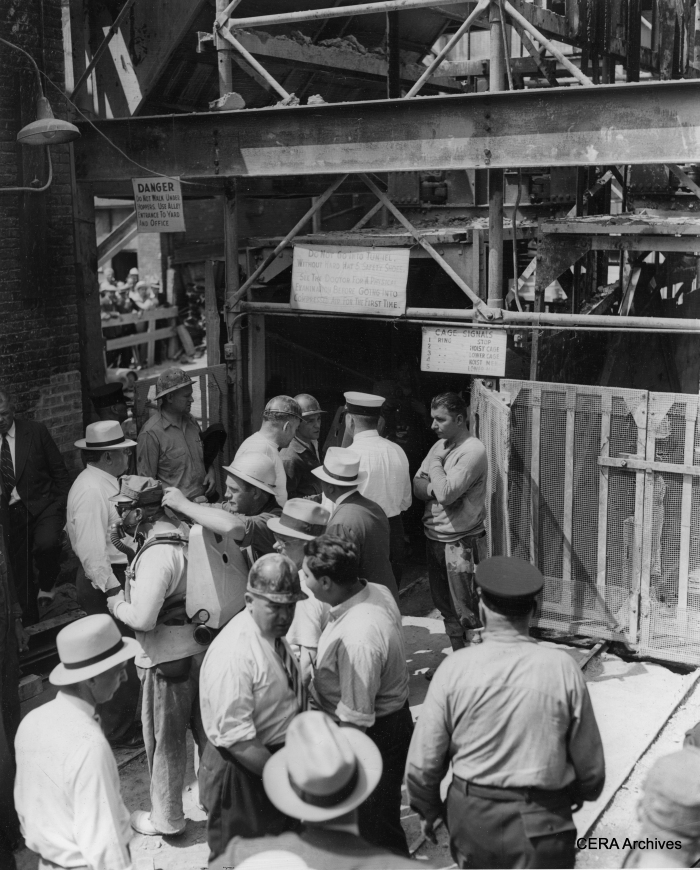
July 21, 1939 – Subway excavation in the Loop was literally a mining operation: “Pix shows crowd of workers, subway officials and firemen going down entrance to tunnel.” (Photo by Mosse)
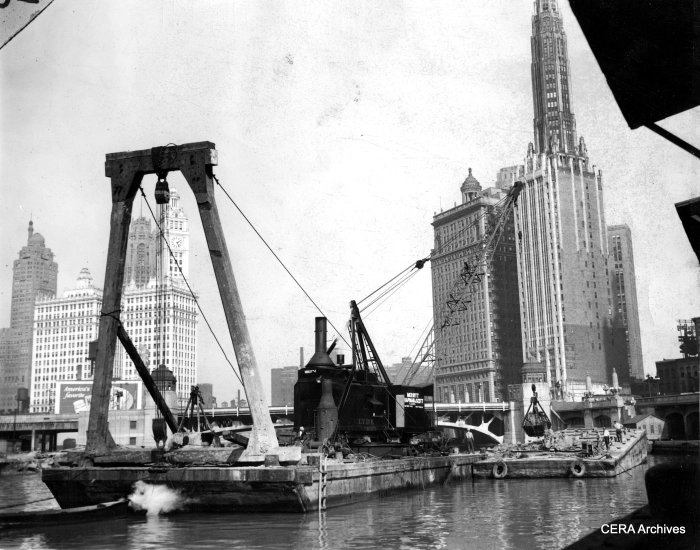
September 22, 1939 – “Dredging river for subway at State and Wacker.” (Photographer unknown)
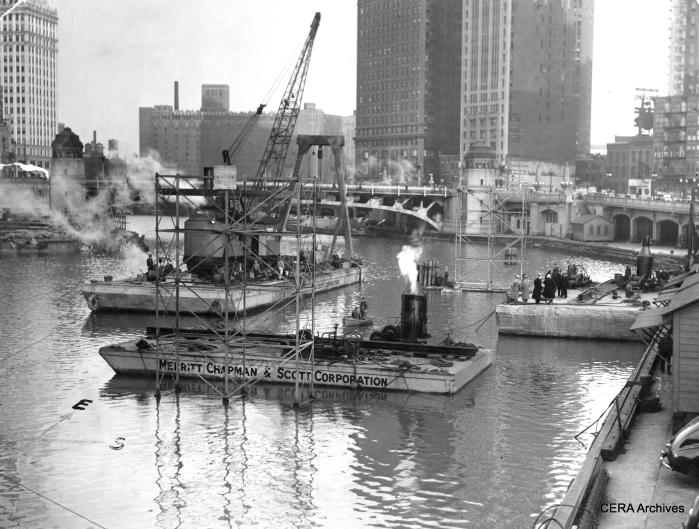
December 12, 1939 – “Photodiagram illustrates how the tubes for carrying the subway under the Chicago River have been lowered in an east and west position in the river. Cables are attached to flat-bottomed scows to hold the tubes in suspension. The steel frameworks protruding upward show the engineers at what depth the tubes ride. Tomorrow morning the tubes will be swung in the direction of the arrow until they line up with State Street. They then will be dropped into a 30-foot channel which has been dug across the river bed.” (Photographer unknown)
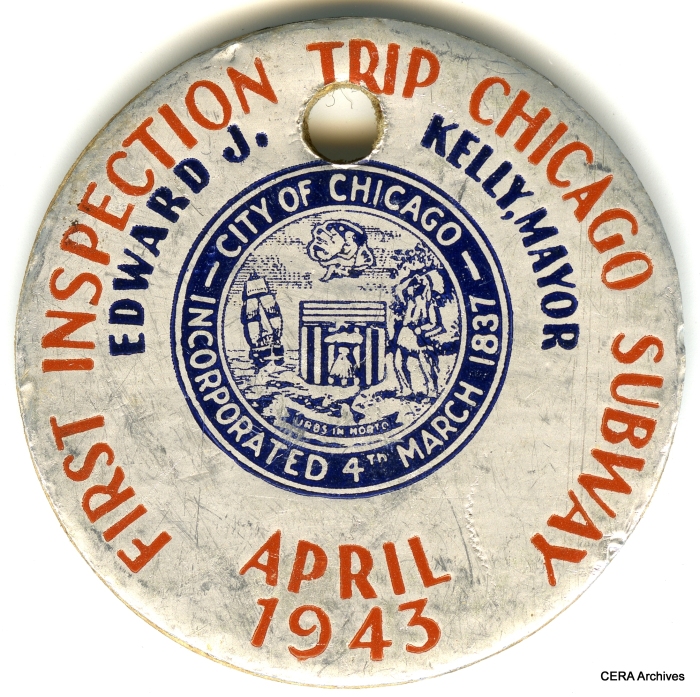
Just prior to the mayoral election, the City of Chicago held an “inspection trip” in the still-uncompleted State Street subway, with only one track in service. Here is a souvenir pin from that event.
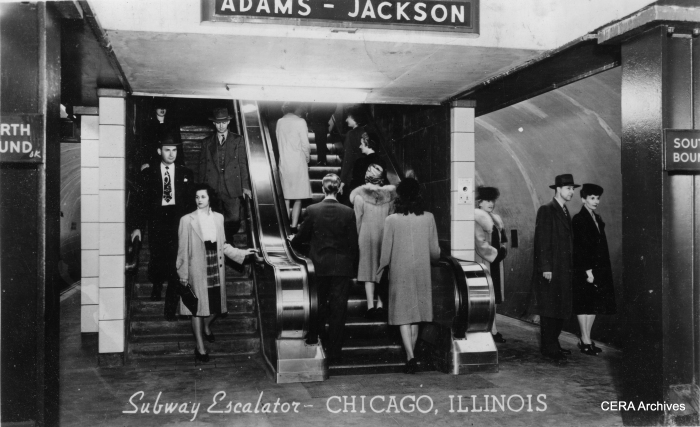
Posed photos, probably taken in April 1943 by Peter Fish Studios, were used by the city to promote the new subway on postcards.
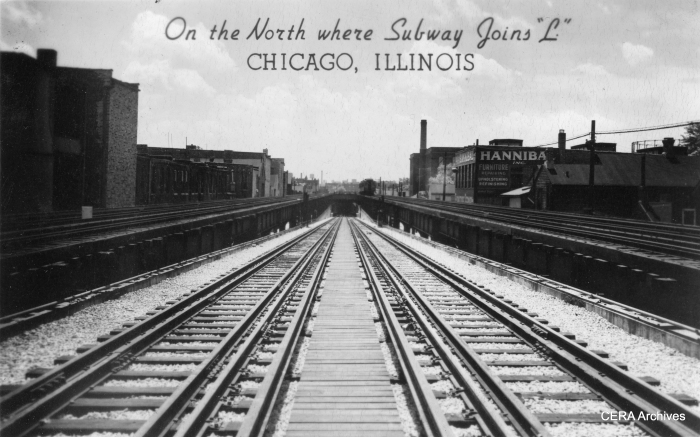
The brand-new right-of-way going into the north end of the subway tunnel, as it looked in 1943. (Photographer unknown)
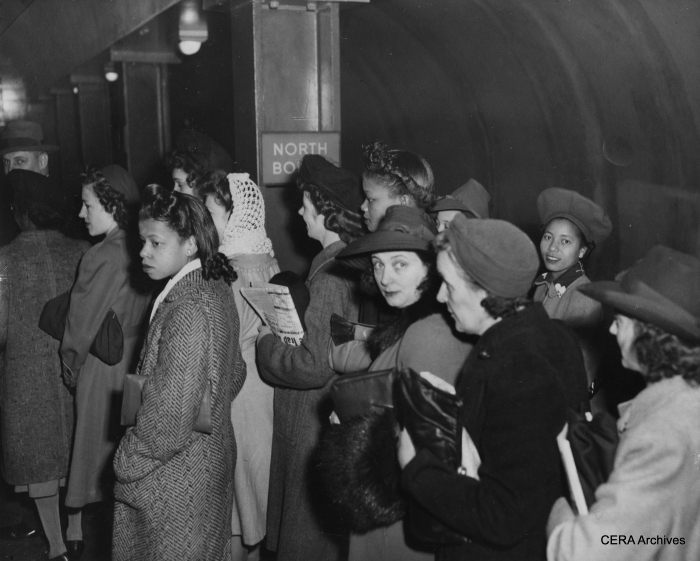
October 18, 1943 – “Crowds standing in the subway waiting for their trains.” (Photo by George Kotalik)

October 21, 1943 – “Signs indicating the approximate positions of car doors when the train stops speed up the loading and unloading of trains. The platform height is level with the car floors.” (Photographer unknown)
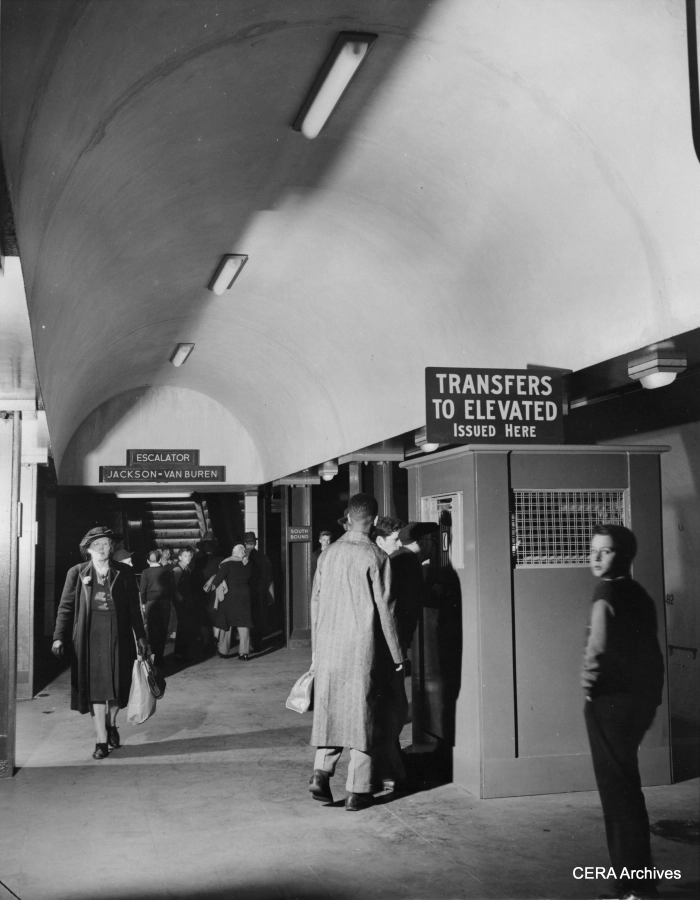
October 21, 1943 – “Transfers to allow passengers to switch from the subway trains to westside elevated cars running over the old structure comprising the Loop are issued issued from booths on the train-level platform. Built at two levels, the subway consists of a station level containing ticket seller, automatic turnstiles, checking lockers and washrooms, and the train level.” Eventually, these booths were replaced by machines that issued “walking transfers.” (Photographer unknown)
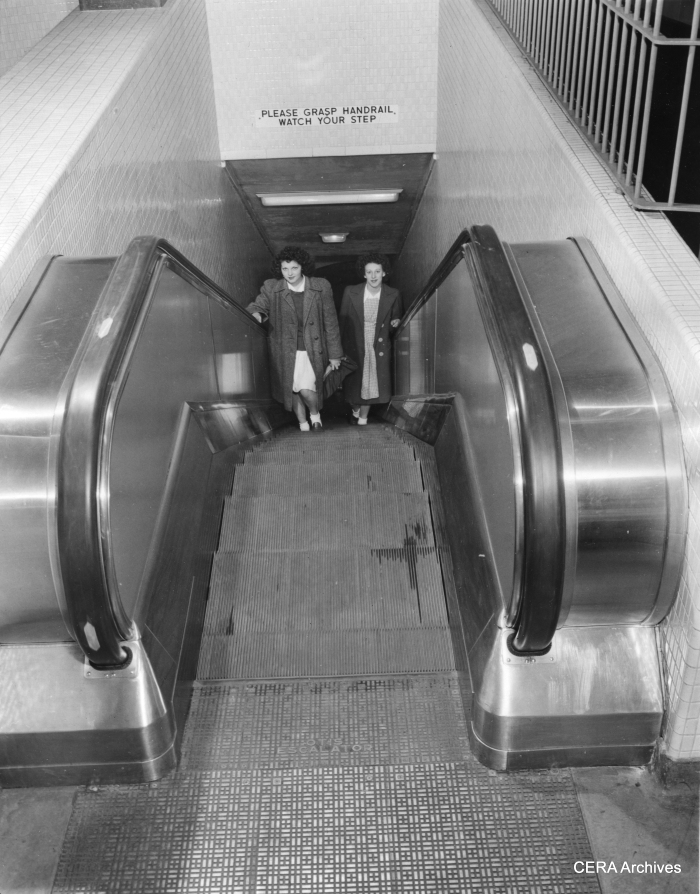
October 21, 1943 – “Electric escalators, which can be operated in either direction depending on rush hour needs, are used to speed moving of passengers between train levels and station levels, just below the street surface. Stairways run parallel to the escalators, while walls of passage ways and station levels are of tile.” (Photographer unknown)
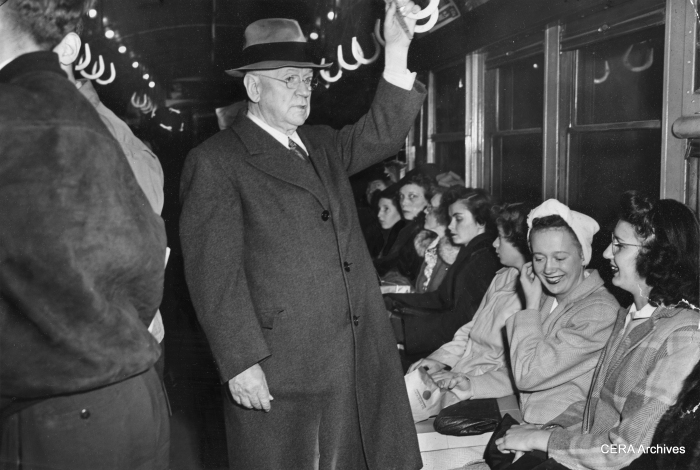
October 24, 1943 – “Secretary of Commerce Harold Ickes, who okayed checks for $17,000,000 worth of government money that went into the Chicago subway, made a tour of it yesterday and found it much to his liking. The car was crowded on the return trip to the loop and Ickes stood up.” (Unknown photographer)
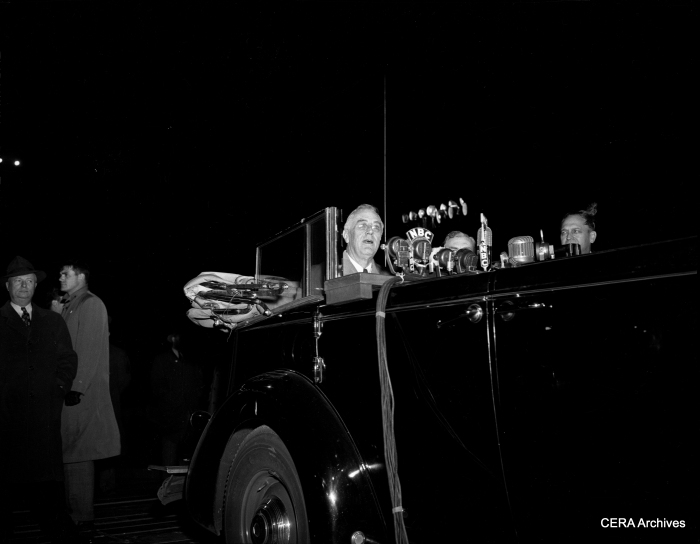
President Franklin D. Roosevelt, shown here in Chicago in 1943, had close ties to Mayor Kelly. His Administration approved additional funding that made the Chicago subway possible. (Photographer unknown)
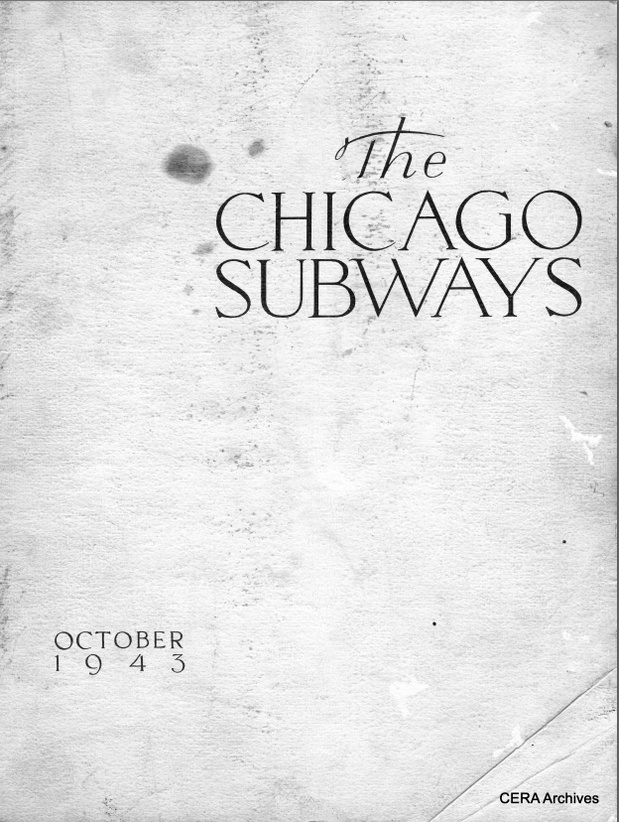
Justifiably proud of its new subway, the City of Chicago issued a 32-page booklet about it in October 1943, which you can downland and read here as an 8mb PDF file.
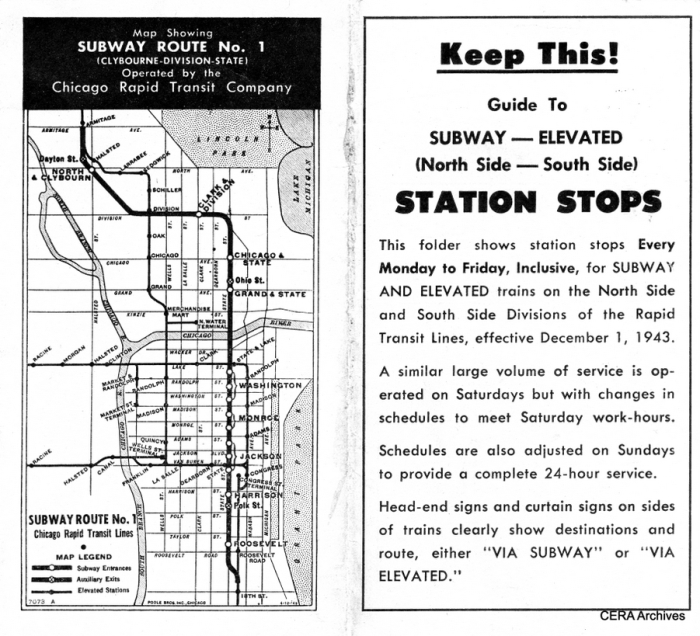
A CRT brochure, effective December 1, 1943, showing routing changes caused by the opening of the State Street subway. You can download it here as a 1.24mb PDF file.
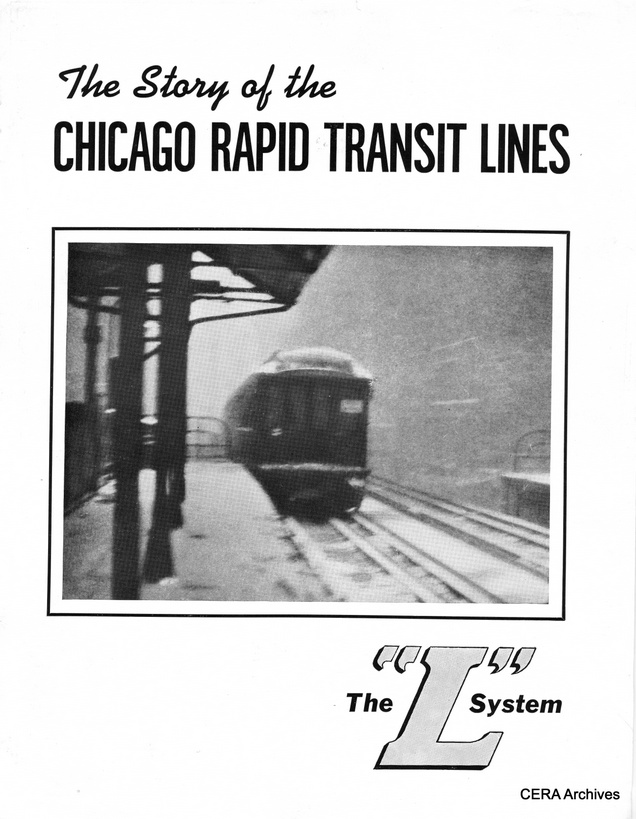
A CRT brochure detailing the history and extent of the rapid transit system in 1937, just prior to construction of the Initial System of Subways. You can download and read it here as a 2.21mb PDF file. (This is a 1940 reprint.)
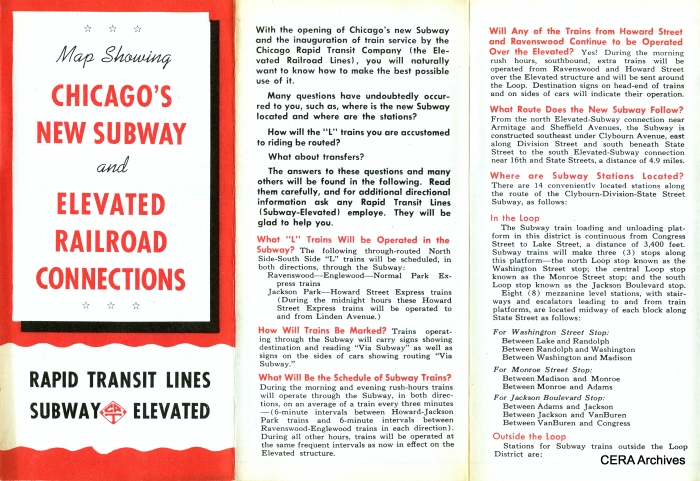

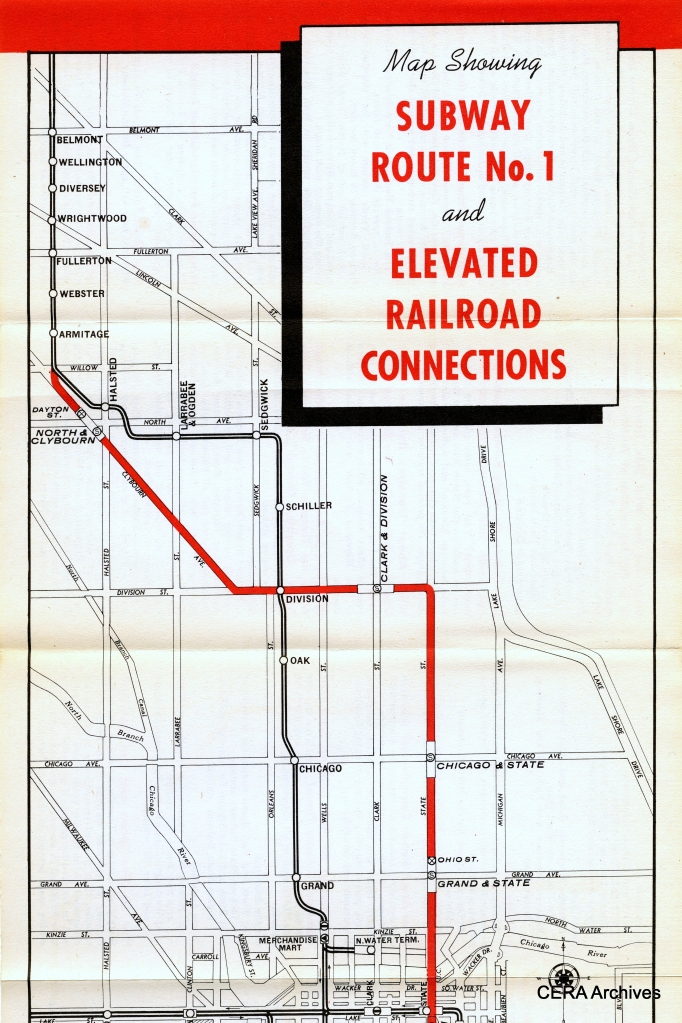
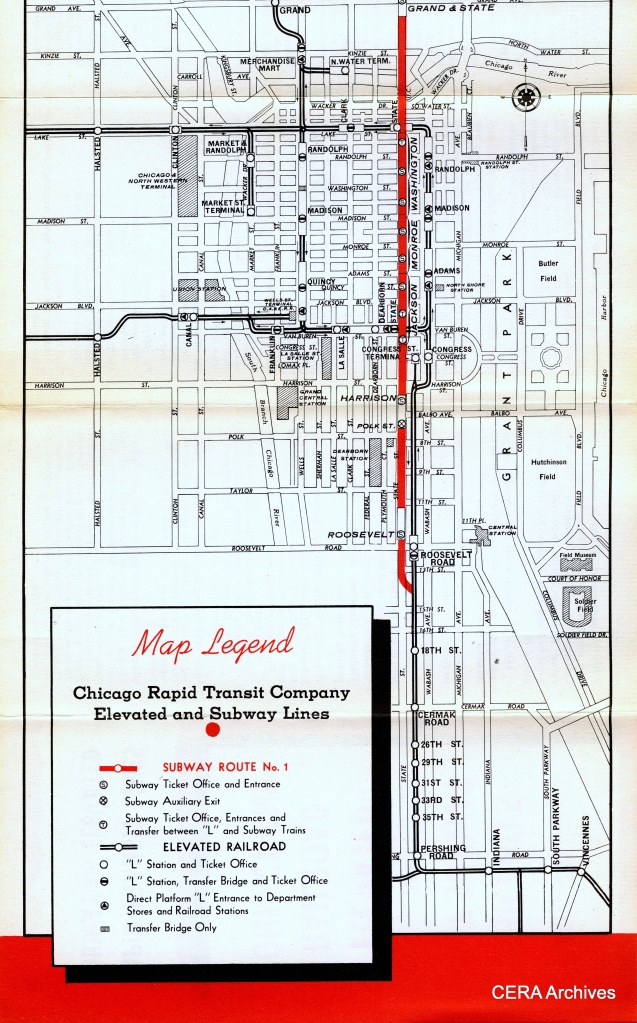
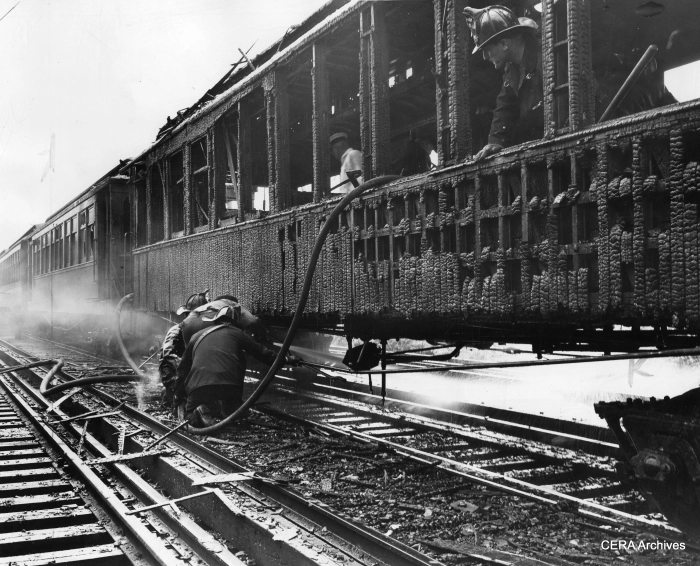
July 23, 1944 – Illustrating how wooden “L” cars could have been a fire hazard in the subway, if they had been allowed, here is a contemporary account of just such a fire on the elevated structure: “Lake St. opposite Garfield Pk. Conservatory. One car completely gutted and others tied up for blocks. Two other cares were more or less severely damaged too.” (Photo by Risser)